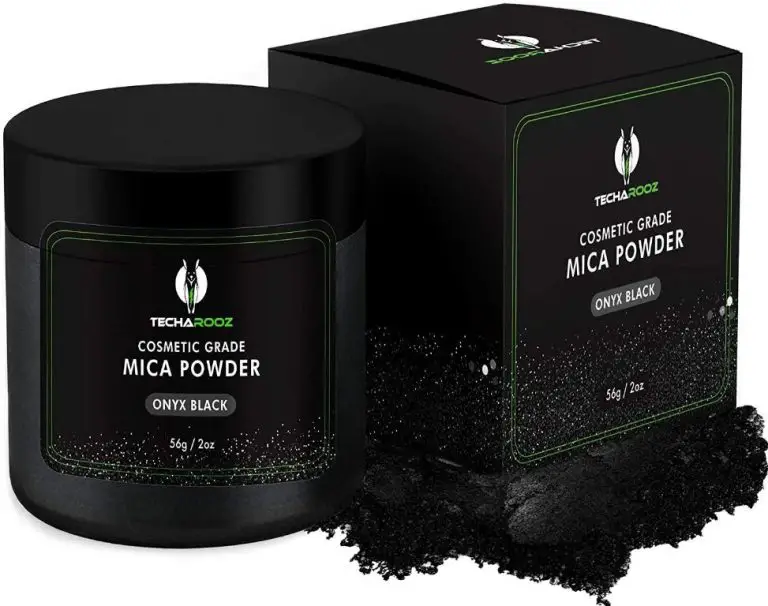Are Candles Considered Flammable For Shipping?
Shipping candles can be complicated due to regulations around flammable materials. Candles contain wax and wicks that must be ignited to serve their purpose, making them inherently flammable. However, regulations differ on whether candles are classified as hazardous materials for shipping purposes. This leads to confusion around proper procedures and safety precautions for candle shipping.
This article provides an overview of regulations and best practices related to shipping candles. We’ll explore if and when candles are considered flammable for shipping, what the specific regulations say, required labeling and packaging, and tips for safe transportation of candle products.
Definition of Flammable Materials
According to Merriam-Webster, flammable refers to any material that is “capable of being easily ignited and burning quickly” [1]. Cambridge Dictionary defines flammable as “able to catch fire easily” [2]. In general, a flammable material is one that can be set on fire, combust, or ignite under normal conditions.
For a material to be considered flammable, it must have a relatively low flash point and auto-ignition temperature. The flash point refers to the lowest temperature at which a material can form an ignitable mixture with air. Substances with flash points below 100°F are generally considered flammable. The auto-ignition temperature is the lowest temperature required to ignite a gas or vapor without an external spark or flame. Flammable materials tend to have auto-ignition temperatures below 842°F.
Common examples of flammable materials include gasoline, acetone, benzene, propane, lighter fluid, and alcohol. Many flammable substances are liquids, but flammable gases and solids also exist. The chemical composition and structure of a material determines its flammability level.
Flammability of Candles
The flammability of candles depends on the composition of the wax and the wick. Different waxes have different flash points, which is the lowest temperature at which they can ignite. Common candle waxes like paraffin, soy, and beeswax generally have flash points between 400-450°F (204-232°C) [1].
The wick is typically made of braided cotton or paper fibers. When lit, the wick material chars and forms an ember that maintains the heat needed to melt and vaporize the wax to fuel the flame. The burning wick produces a flame temperature around 1,000°F (538°C) [2]. This is sufficient to keep the wax at the wick melting point so it can be drawn into the flame via capillary action.
For a candle flame to ignite, the wax surrounding the wick needs to be heated to its flash point. So the ignition temperature depends on the type of wax but is typically between 375-500°F (190-260°C). Once the wax reaches this temperature, the vapors given off can ignite from the heat of the wick ember and surrounding flame.
Shipping Regulations for Flammable Materials
There are various regulations in place for the safe transportation of flammable materials. According to the Federal Aviation Administration (FAA), flammable materials are classified as hazardous goods that require specialized handling and packaging when being shipped (source). The United States Department of Transportation (DOT) similarly categorizes flammable solids, liquids, and gases as hazardous materials under its Hazardous Materials Regulations (HMR). Compliance with these regulations is mandatory for all domestic and international transportation of hazardous materials by air, rail, highway, and water.
The DOT divides flammable materials into different hazard classes based on their flash point and boiling point. Class 3 materials include flammable and combustible liquids like paints, gasoline, and nail polish remover. These must be properly labeled according to their hazard communication standard and shipped in authorized containers and quantities. For example, gasoline has stringent quantity limitations for air transport. Solids capable of causing fire through friction, moisture absorption, or spontaneous chemical reaction are Class 4 Flammable Solids. Class 2 Compressed Gases include flammable gases like propane and butane. Shippers must receive proper Hazmat training, follow packaging guidelines, and file shipping papers (source).
Are Candles Considered Flammable?
Whether candles are considered flammable depends on the type of candle and its intended mode of transport. According to the U.S. Department of Transportation, candles fall under the classification of “flammable solids” due to their wax, wick, and oil content.

The U.S. DOT defines flammable solids as “any solid material, other than an explosive, which under conditions normally incident to transportation is liable to cause fires through friction, retained heat from manufacturing or processing, or which has an ignition temperature below 212°F.”
Candles made from paraffin, soy, or beeswax are generally considered flammable for shipping purposes. Gel candles may also be classified as flammable due to their hydrocarbon-based ingredients. However, 100% beeswax candles with cotton wicks may qualify for exemption if proven to have a flashpoint above 170°F.
When shipping candles by air, all types are subject to limitations under IATA Dangerous Goods Regulations. Quantity limits depend on the type of candle. Restrictions are in place to prevent fire hazards in aircraft cargo holds.
For ground shipping, USPS prohibits all flammable solids including candles. FedEx and UPS allow some candle shipments in limited quantities, with additional labeling and packaging requirements to help prevent accidental ignition.
Ultimately, most commercially produced candles fall under the “flammable solid” classification and must comply with regulations for safe transportation.
Candle Shipping Requirements
When shipping candles, there are certain requirements and best practices that shippers need to follow to ensure safe and compliant delivery. Proper packaging, labeling, and adhering to restrictions are key.
According to the UPS shipping guidelines, candles must be packaged in new, strong corrugated boxes with at least 2 inches of cushioning on all sides. Candles should be further wrapped in Kraft paper or bubble wrap (Source). The boxes must display the label “Surface Only” or “Surface Mail Only”.
For USPS shipments, candles must be packaged in boxes with at least 2 inches of cushioning and marked as “Surface Only”. International shipments have more restrictions, with most carriers prohibiting shipment of candles altogether (Source).
Proper labeling is also critical. The outside of the box should be clearly marked “Fragile” and “This Side Up”. The label should also state “Candles” or “Wax Candles”. Shippers need to classify candles correctly with the proper HS codes or Schedule B codes to avoid customs issues.
Knowing the restrictions for different carriers and properly packaging and labeling candle shipments is key to ensuring safe, compliant, and timely delivery.
Safety Precautions
When shipping candles, it is crucial to take proper safety precautions to prevent fires. According to the Consumer Product Safety Commission (CPSC), around 11,000 injuries per year are caused by candle-related fires. Therefore, shippers must follow strict guidelines for packing and shipping candles to minimize fire risks (https://www.compliancegate.com/candle-regulations-united-states/).
Some key fire safety tips when shipping candles include:
- Pack candles securely to prevent breakage and leaks during transit. Wrap each candle individually in bubble wrap or tissue paper (https://www.stonecandles.com/blogs/blogs/fire-safety-and-candles).
- Place cushioning material between candles to absorb impact and prevent friction. Materials like crumpled paper or peanuts work well.
- Seal candle lids with shrink wrap or tape to prevent wicks from igniting during shipping.
- Label the package as flammable since candles contain wicks and wax that can catch fire.
- Follow regulations for ground shipping flammable solids when sending candle packages.
- Include fire safety instructions inside the package advising recipients to keep candles away from drafts and out of reach of children and pets (https://www.luxuwick.com/candle-safety).
Taking proper precautions allows candle shipments to arrive safely. Shippers must make fire safety the top priority when packing and sending candle orders.
Alternatives to Shipping Candles
In some cases, shipping candles may not be the best option. There are a few alternatives candle sellers and buyers can consider:
Gift cards: One of the simplest alternatives is for the candle seller to offer gift cards that can be used on their website. The buyer can purchase a gift card electronically and send the gift card information to the recipient. The recipient can then redeem the gift card to pick out their own candles.
Pick-up options: Allowing local customers to pick up candle orders directly from the seller eliminates shipping needs. The seller benefits from saving on shipping costs.
Candle-making kits: For a unique gift, the buyer can purchase a candle or soap-making kit to send to the recipient. This allows the recipient to enjoy the candle-making experience themselves.
Donations: Some organizations allow donors to make charitable donations to provide candles to those in need. This connects the gift of candles to a good cause.
Digital candle experiences: While not a perfect substitute, there are digital candle apps and videos that aim to capture the visual experience of candles. This digital alternative removes shipping constraints.
Overall, evaluating alternatives to shipping physical candles can help candle sellers expand their options while providing flexibility for buyers.
Case Studies
Candles can pose serious fire hazards if not properly packaged and shipped. Here are some examples of incidents caused by improperly shipping candles:
In March 2005, the U.S. Consumer Product Safety Commission released a report on candle fires that examined 100 cases of fires started by candles (https://www.cpsc.gov/s3fs-public/candles3.PDF). The report found that 24 of the fires were caused by candles left unattended or placed too close to combustible materials. This demonstrates the fire risks associated with transporting lit or recently extinguished candles.
In one high-profile incident in 2015, a candle left burning unattended in a yacht’s VIP room caused a fire that resulted in the total loss of the $6.78 million vessel (https://www.linkedin.com/pulse/how-candle-caused-loss-678m-superyacht-miami-case-study-?trk=organization-update-content_share-article). This example underscores the extreme damage candle fires can cause in confined spaces, like the cargo hold of a plane or truck.
These cases demonstrate the importance of proper packaging and handling when shipping candles to minimize fire risks.
Conclusion
In summary, candles are typically considered flammable due to their combustible wax and wick composition. Most major shipping companies and regulations like IATA and IMDG classify candles as flammable solids and have special requirements for shipping them safely. These include proper packaging, labeling, quantity limits, and separating from other hazardous materials during transport. While candles present fire hazards, with proper precautions they can generally be shipped safely domestically and internationally via air and sea. The key points to remember are using approved packaging, restricting parcel sizes, disclosing flammability, and working closely with your shipping provider to ensure full compliance.



